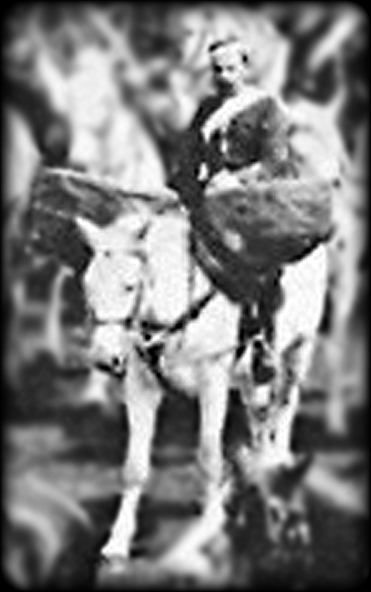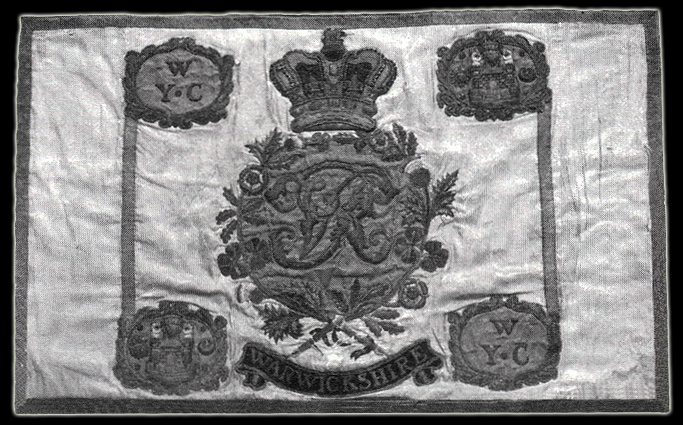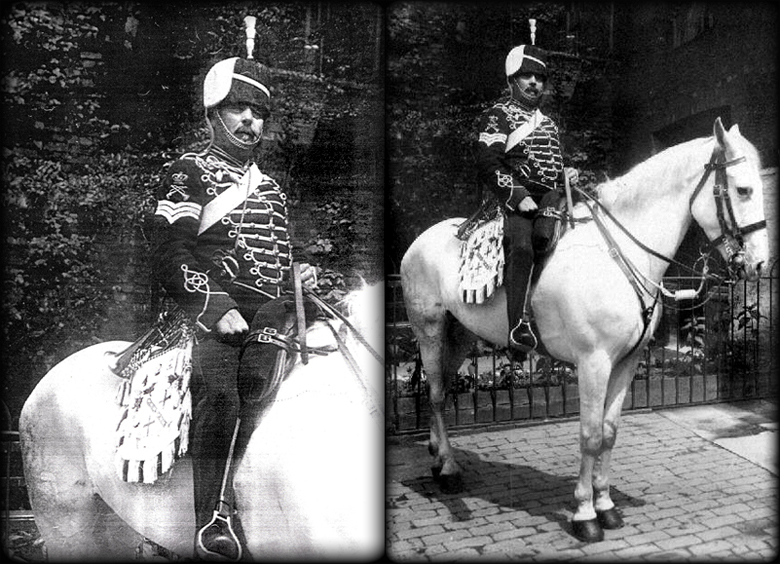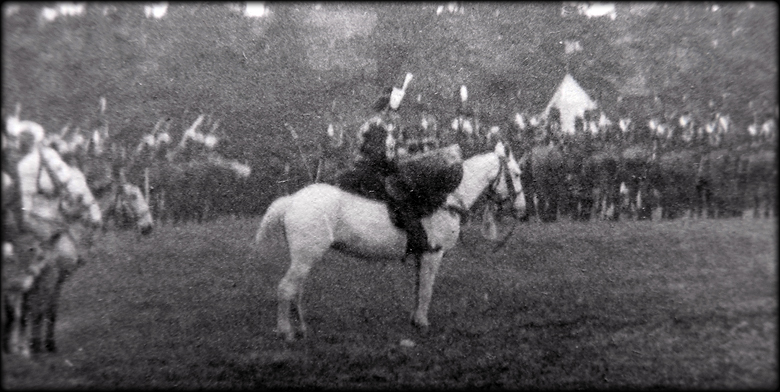
DRUM HORSE

c1890
The earliest record of the LYC mounted band is
recorded in a painting of the regiment that dates to the day of
the 30th of September 1813. The next record is then photographic
and records the mounted band dated 1885. The PAOLYC Mounted Band
of 1890 numbered approximately 20 in number and had "Greys" as their mounts.
Its not clear if the drums in the above picture have regimental
drum banners on them, the drums may have plain cloth side
covers. The regiment is in "undress" uniform when this
photograph was taken. The Drum horse does appear to have a white
"Jowl Plume", ornamented bridle with stirrup reins and the
saddle has a black sheepskin cover.

18 members of the
PAOLYC Mounted Band in "Undress" uniform, c1890. The Bandmaster,
Henry Nicholson, can be seen mounted furthest front left.

18 (approx) members of the
PAOLYC Mounted Band in full review order, 1885. The LYC Drum
Horse is seen at the front.
The Drum Horse :- Is a horse, any horse, that has been
appointed a position in the Military / Calvary / Mounted
troops and Regiments to carry heavy kettle drums and a
drummer (rider). The name for this horse reflects it's job
not it's breed heritage.
The drum banner :- Whilst the presentation of
a Standard or Guidon was an event of importance in the life of a
yeomanry Regiment, invariably reported in the County Press and
the regimental history (if any). Acquiring a drum banner was
apparently of secondary importance and seldom recorded. Nowadays
paintings, prints and photographs are also quite rare.
There are no definitive images of the PAOLYC Drum Horse having
drum banners on the kettle drums. to date
.
Below is a picture of the Warwickshire Yeomanry Cavalry drum
banner, this is from the early Victorian period. This is almost
identical in design to the PAOLYC banner and is approx 45 inches in
length and approx 22 inches in depth.
The banner is heavily embroidered on silk,
backed with a strong cloth and hooked for fixing onto the drum.

This banner can be seen at the
Warwickshire Yeomanry Museum.

PAOLYC Trumpet Major William Rouse c1897
This picture confirms that the PAOLYC Band wore a white
busby bag and white horsehair plume to "difference" them from
the main Regiment
. The trumpet
banner appears to have Arms related to the Curzon-Howe (Earl
Howe) family emblazoned upon it.
Below is a picture of the PAOLYC
Drum Horse (the white "Jowl Plume" can clearly be seen and no drum
banners are worn), the mounted band was present
at the Duke of Cambridge's' visit to the Midlands in 1885. A
Squadron of the PAOLYC can be seen in the right background
facing toward the tent and can also be seen in the picture below
that are to the close right of the drum horse.

PAOLYC Squadron closest to the photographer (below), these two
images are taken from a photograph in a private collection in
Leicestershire.
